Our bamboo-flavoured pringle
E118: Guest Post by Ishan Shanavas, The Owlet: Shift Your Perspective
Dateline: Goa, India
“Everyone has a secret climate recipe within them.
It just needs to be surfaced or brought into awareness”
— Srinivas Mangipudi, visual storyteller ‘Climate Recipes’
TL;DR:
Building a pringle out of mud slurry, rubble and bamboo. And ingenuity & sweat.
Guest essay Constraints = Creativity by
The Pringle
We are building a pringle at The Flora Project1. Well, the architects and mathematicians may call it a hyperbolic paraboloid 🤣, but we know better!
I am exhausted. But not half as elated and exhausted and blistered and sun-burnt as my son and sister. Over this 10-day journey we have taken the site from this picturesque but litter strewn site used by local industry and locals as party city and a communal dumping ground:
To this:
It was a very intentional and collaborative journey, involving over a hundred excited local school children (and by extention their parents, teachers, admin staff, bus drivers); tens of local environmental leaders2 including architects, artists and politicians who discussed our hope for the future, job opportunities and sustainability with this young generation; family, welders, workers, drivers, and more.
The photo above celebrates the completion of this phase of the project where we built a shade structure3 (The Pringle) entirely with natural materials (no concrete), with a nature walk, a birding session and a discussion on living alongside nature in the Amche Mollem (@mymollem.goa) project from Gabriella D’Cruz (long time Tribe Tilt members will remember this inspiring UN-award winning environmentalist from 100 editions ago! E18: Hope or Despair).
Over the week, we (my son!) have spoken about leadership in general, and eco-leadership specifically. We had over 120 students show up on the site on various days including their weekends. They broke ground. They gathered up 10 bags of mainly plastic cups and bottle caps (is there a design opportunity here for a future packaging designer?) They gathered rubble to fill the foundation.
Visiting local experts taught them about the tensile strength, sustainability and value in natural materials like bamboo; the importance to the ecosystem of maintaining indigenous biodiversity; how we each have agency and a private climate recipe within us.
The students built a geodesic dome. They figured out the math (and challenge) of building the hyperbolic paraboloid. They learned that strength in nature can be created through tension. This was my personal big take-away.
There will be many more picture essays and learnings that come from this project. Including the visual step-by-step throw-back process of laying foundations without concrete and building with bamboo.

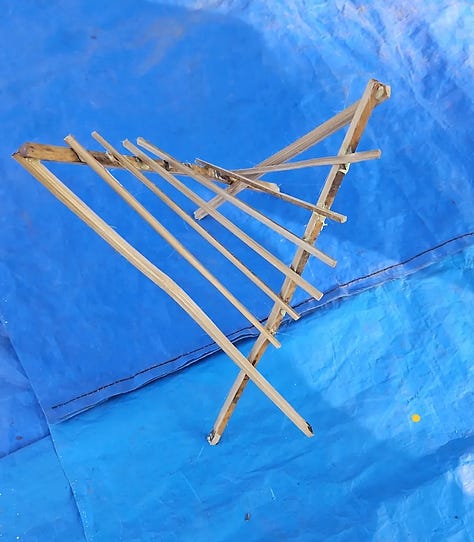
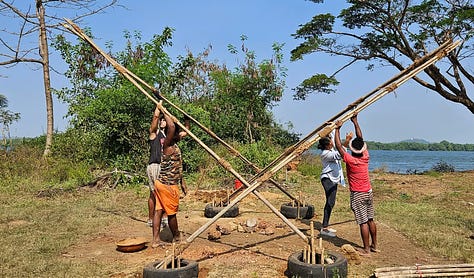
I should write more. I will write more. Now to bed.
Today’s guest essay is from a young (barely 20-yr-old) Indian wildlife enthusiast
. He couldn’t join us at the Flora Project in person in Goa, but gets to add his voice. One message that my son repeatedly told the students was that our interests and professions can carry an element of sustainability even if the practice isn’t explicitly focused on the environment. I picked this particular essay from all that Ishan offered me because it showcases how he uses so many skills and passions to help us help the earth. Please thank Ishan, Tribe Tilt, by subscribing to .For now, I’d like to celebrate my beautiful family whose hard work over the years makes this inspiring project possible:
Other related Flora Project stories:
Photos and content are the intellectual property of
, and reprinted with permission.Here are some of his other essays you may enjoy:
A schooling with wildlife which inspired What is herping?
Constraints = Creativity
Author: Ishan Shanavas
Newsletter: The Owlet Instagram: @ishan.shanavas
Stretching my legs, my feet rested in a tiny gap atop my book-laden table. A rose-gold Macbook lay precariously on my lopsided thighs. A few inches off and it would fall. Craning to see it, my neck bent itself into a position that would warrant 5 years of yoga to correct. Talk about uncomfortable. Ugh. The screen flashed despondently as my middle finger jabbed at the well-pressed, dented right-arrow key.
I scanned my monitor as photographs taken over the past three years darted by. Images from years of waking up to countless sunrises, shooting in that sweet, golden, chandelier light. Of lush rainforests, spectacular elephants and intriguing villagers; all flattened into photographs.
But as image after image passed by, my mind nagged me with a single thought:
None of them are unique.
In spite of 3 years of hard work, my photographs weren’t exceptional. They seemed plucked straight out of the Getty-images gallery—technically sound but not one-of-a-kind. Not compelling enough to slap someone and say, “You gotta check these out!.”
It wasn’t art yet. It was repetition. A pale imitation of an overdone style. A jaded image of elephants surrounded by foliage on my screen—just like the 9738 elephants photos out there—stared at me. All my efforts seemed wasted. Greys and greens eyed me mockingly from the screen—WHY DID THOSE COLOURS LOOK AT ME LIKE THAT? A pressure grew in my chest, pressing upward, forcing the air and confidence out of me.
But then suddenly, out of the torpor, a small voice flickered in my head. Quiet, yet clear. Sailing over my overthinking, it said “What if you removed the colours?”
My fingers kissed the touchpad, dragging the saturation slider down to zero. With the draining of colour, the picture came alive. Suddenly, I saw depth and character. Shock and elation found its way onto my face, the composition, contrast, clarity—all screaming creativity.
Until that point, I was fixated on colour photographs simply because it was the norm. I mean, why shoot in B&W when you have cameras that can render such vibrant colours! I can think of many people who see such a move as a step backwards.
But discovering BNW photography was like donning a new pair of eyes. I got a new way of seeing the world—a new way of being. It opened doors to my creativity that sat jammed in my colour photography. Unearthing a more distinctive form of expression.
By removing the colours, I am reducing the number of things that can grab my viewer’s attention. Now, they must focus on the contrast, shape and texture of my subject. In monochrome, there is no colour to think about (Duh!), therefore highlighting composition and contours make photos POP.
So the next time you're in a creative rut, switch things up. Set constraints to unleash your creativity. Do you make music? Use only the violin for a song. Love painting? Try a piece with just shades of orange. NARROW DOWN to one aspect of your craft so that you can emphasise a particular style. A controlled approach will open your eyes and see that which you were previously blind to.
Seeing the world through a new lens will reveal things that you did not known before. Shifting your perspective changes how you see the world. And that changes your world.
If you support my work (and want a free reading list), SUBSCRIBE to
Click here for the original essay.
I also recommend his other essays:
A schooling with wildlife which inspired What is herping?
This week’s participation opportunity:
Do you have a climate recipe within you? Share it with others. Tag @theFloraProjectGoa on Instagram as you share your own climate story.
Follow us on Instagram @theFloraProjectGoa Enjoy the journey of building such structures alongside ours. Learn how to work with sustainable natural products like bamboo.
This is the Go-Fund-Me page for the project. 5L of water costs 65/- INR approx $0.75 and the kids drink a lot on our open-air site. Your support will be much appreciated and well used.
Thank you for being a part of Tribe Tilt! If you are new, we welcome you. We are a group that believe we can make a difference to the people and places that are precious to us - that we have hope and agency within our own lives that ripples through to others.
Stay healthy. From there all else becomes possible. Hoping to see you again next week.
Karena
Would you like to join our Tribe Tilt?
My Aunt Flora is remembered for her cheerful smile and amazing hugs. She passed away suddenly in her 30s, leaving behind my dear Uncle Fix-It (E59) and a little plot of land on the Mandovi River.
Spear-headed by my sister, our family launched The Flora Project - an eco-education project - in her honour:
- offering ideas in eco-leadership for life-long learners aged 4-94
- helping local school teachers focused on climate awareness with a sustainability curriculum
- showcasing sustainable living methods that learn from and work with nature, including building with bamboo and mud (without concrete)
- creating a space alongside river mangroves where local sustainability programs can offer their own workshops
If you are in or around Goa Saturday December 9 - Sunday December 17 please join us. We are inviting local students and all eager learners to join us in building a shelter out of bamboo and mud, shaped like a pringle, to offer shade, cool and shelter to those who participate in subsequent workshops.
The main workshop will be led by ecologist and architect Tallulah D’Silva. One of her principles that took a hold of my imagination is her study of termite mounds. Who would have thought that these piles of dust actually allow cool air and light to flood the complex structure within? She borrows these techniques to build shelters that are cooler within.
Follow @ theFloraProjectGoa on Instagram to watch this structure being designed and built, and share it with others as inspiration. During the week, we will be joined by many others interested in telling their environmental story through their individual skills and crafts - landscaping, art, music, storytelling, project management and more. As Andrew says, you don’t need a degree in environmental science to care for or make your own impact on our Earth.
Among the many environmental leaders who visited to educate and inspire the next generation of climate enthusiasts, and to lend their muscle to the project [all links to instagram handles]: Architect Tallulah D’Silva @tallulahdsilva [she deserves her own Meet a Member profile]; Bamboo Expert Kanwarjeet; Landscaper Daniel D’Souza @danielwithgreenideas; ‘Climate Recipes’ co-authors Shrinivas Mopidevi & visual story teller Shrinivas Mangipudi (@_shramm); Minister of State for Environment and Ports, Shipping and Waterways of India Shripad Naik @shripadyessonaik; College of Agriculture Amey Nayak @amey_nayak29 who taught the students to plant vegetables; Mollem project environmental activist, founder of Good Oceans Gabriella D’Cruz @gabrielladcruz; Nature Walk educators and MD doctors @colin_braganza Vedang Saunt @the_wood_spirit; Noreen Carneiro and Andrew de Souza on leadership
Your first question may be “How do you provide shade? It is just a skeleton structure.” And you are right. We originally plan/ned to cover it with tarps, or matted coconut leaves. But while on site we realized that there is a wicked upcurrent that hits at various points of the day, tipping umbrellas and making tarps airborne which could threaten the integrity of the structure. So we’ve decided to leave it’s beautiful naked ribs which we can cover with saris, linens, simple natural products while doing projects so that there is a covered site for respite from the harsh sun. We will watch nature and work with it for the next stage.

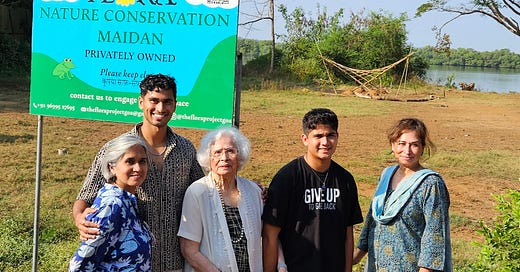




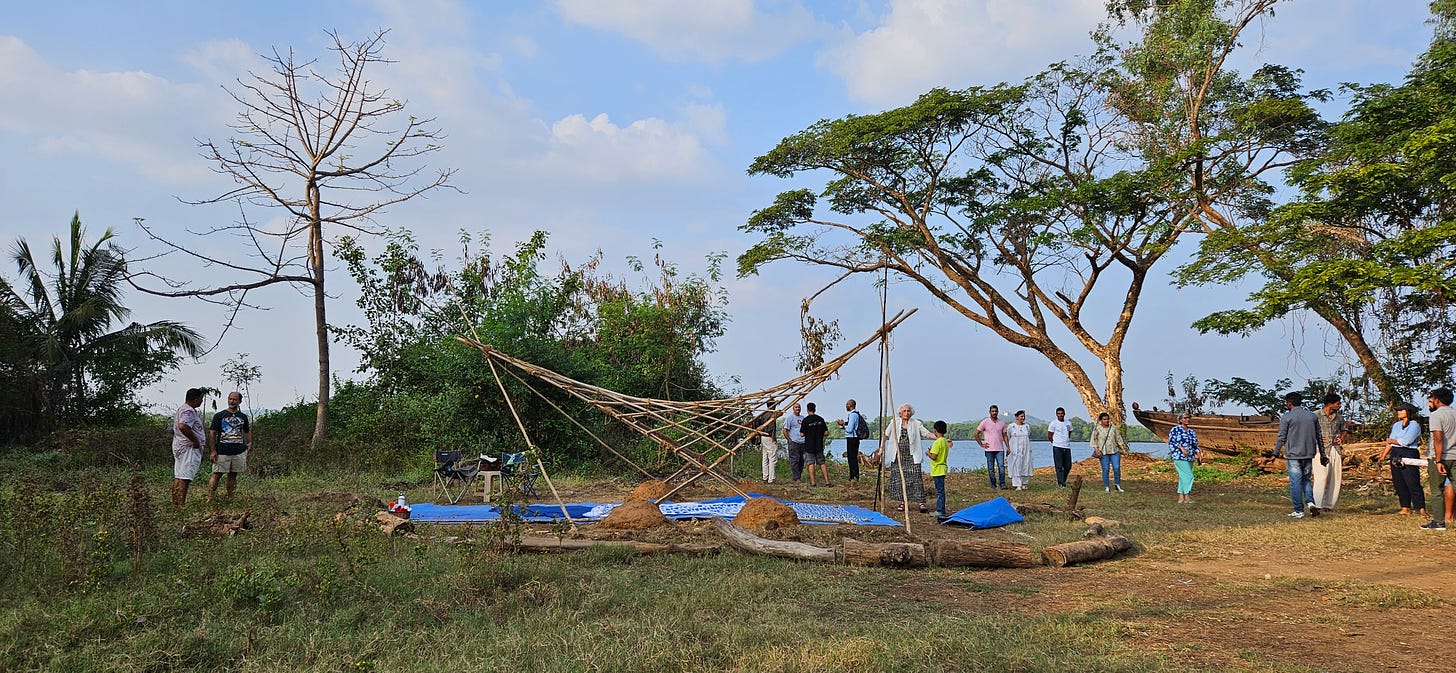
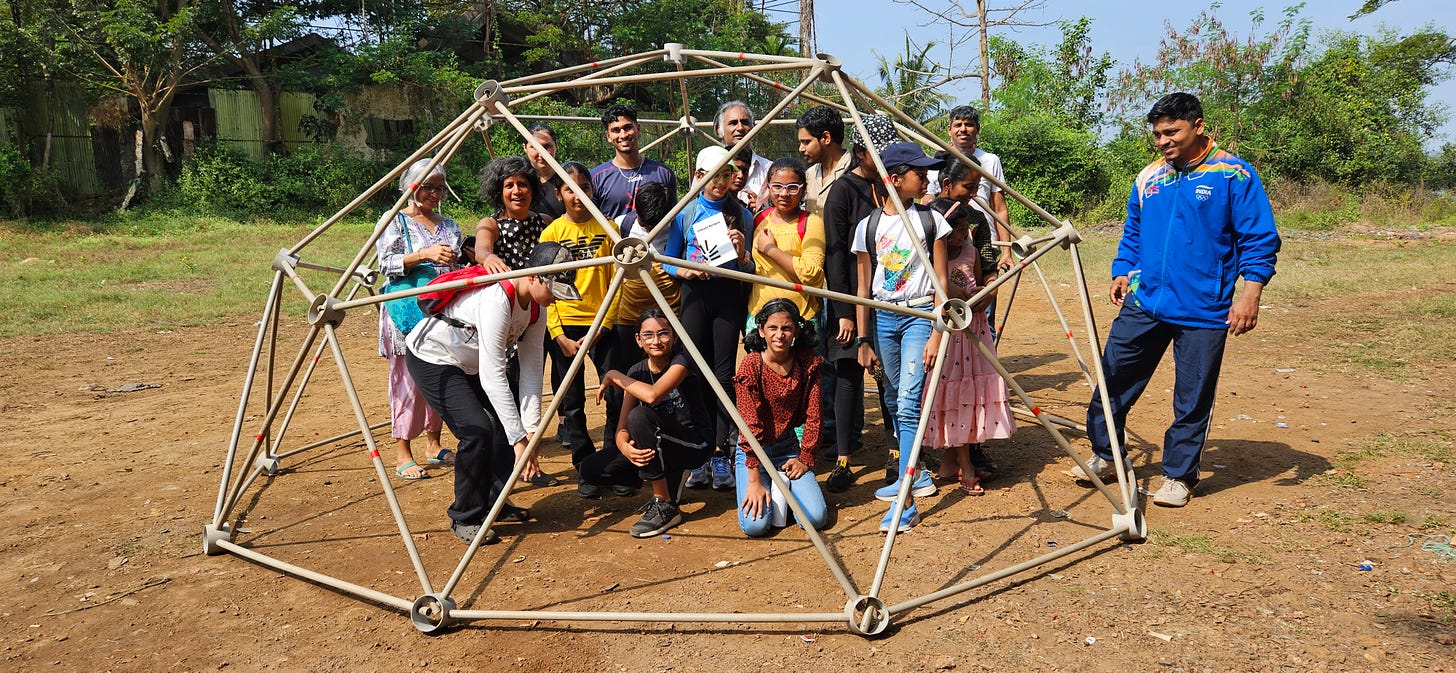

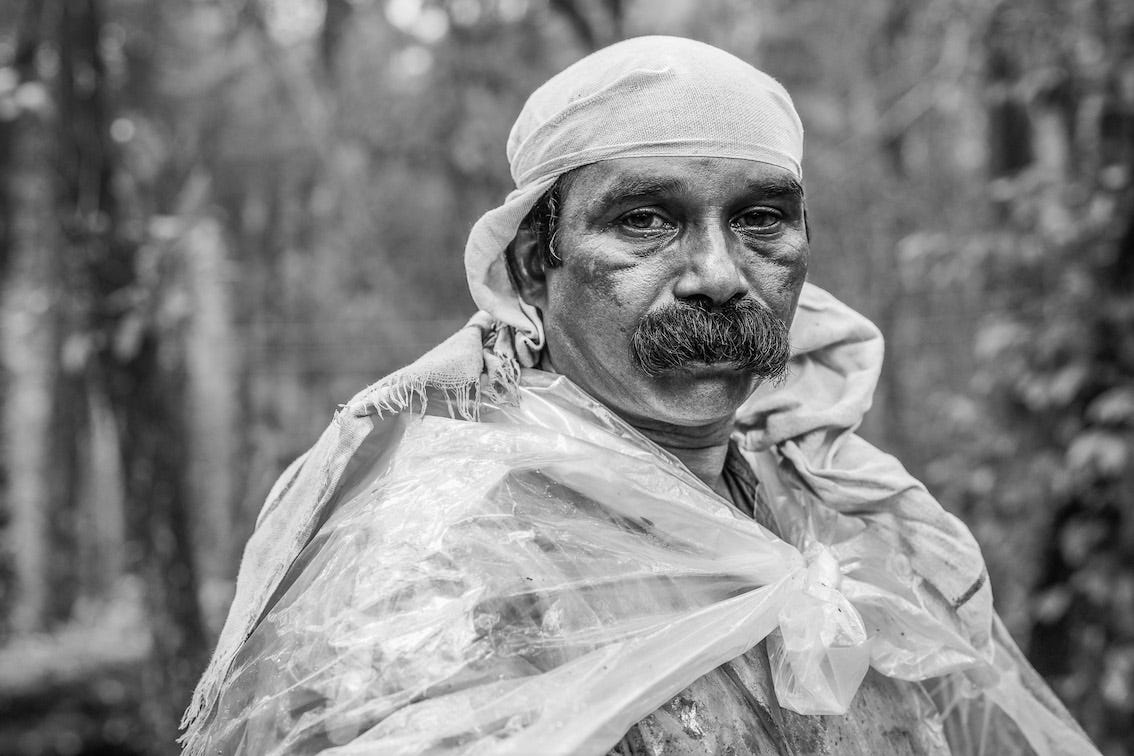
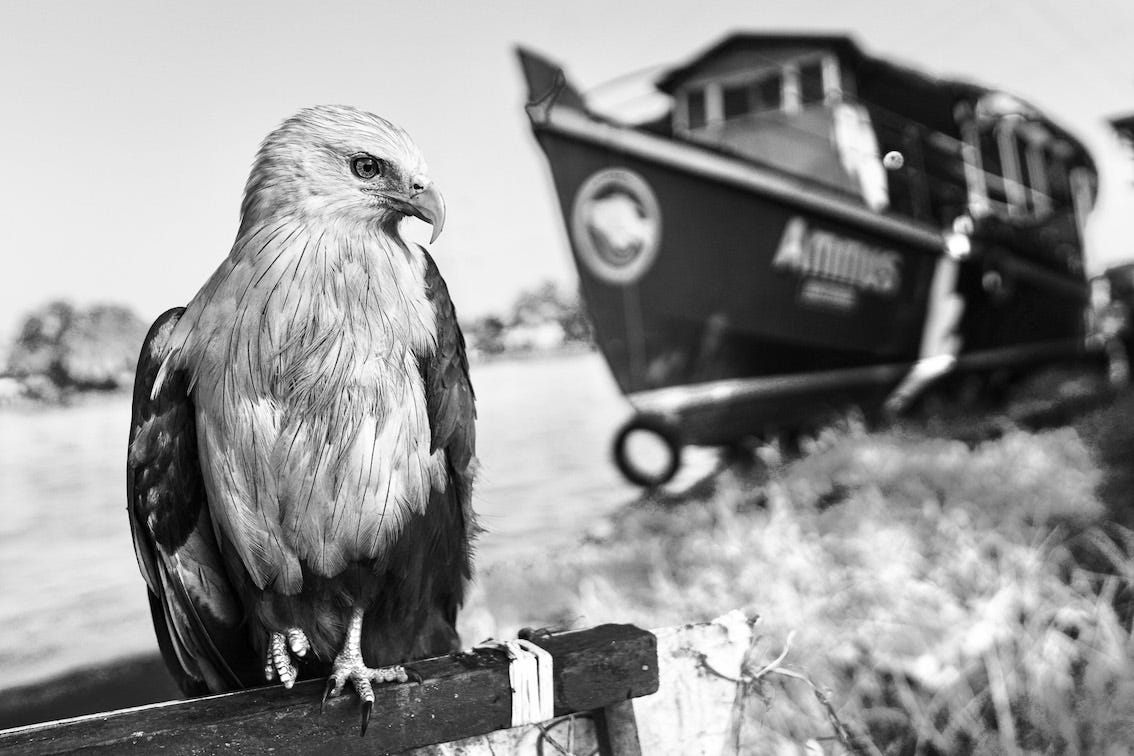


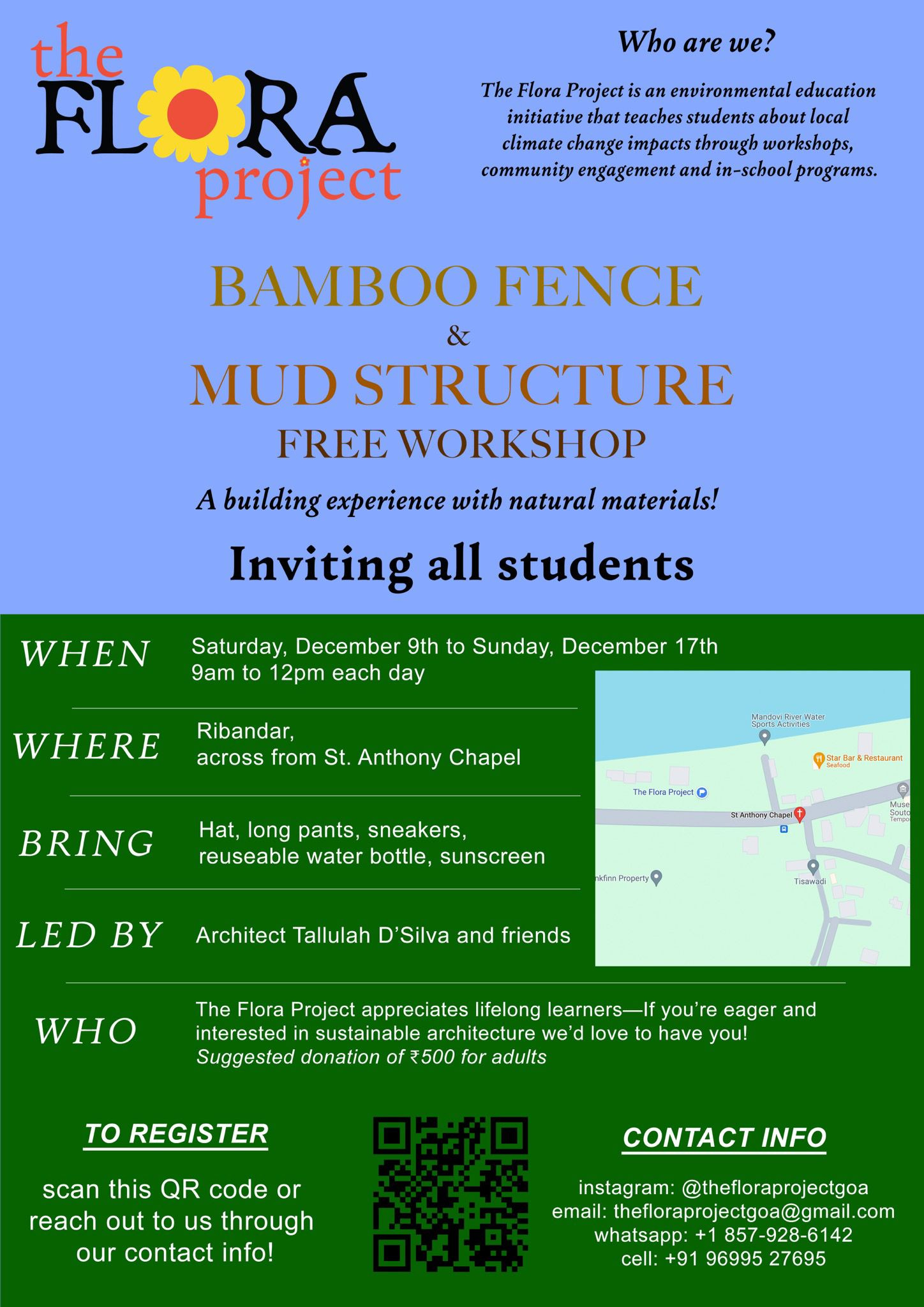

I would like to see the Flora Project first hand when I come to visit you next week Karena. Really some inspiring work. In a world where everyone just talks about these global agendas, I love seeing these local initiatives. This is what translates into results on the ground. I am a firm believer that we need to incubate these local initiatives...
Ishan is an amazing kid! So proud to know him and very glad you featured him here, Karena. Happy holidays!